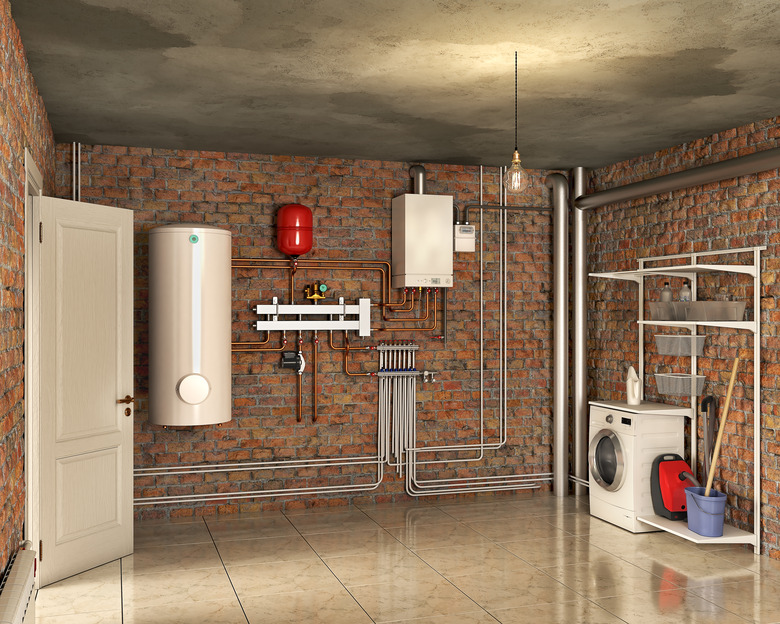How To Tell If Your Drain Tile System Is Plugged
We may receive a commission on purchases made from links.
Drain tiles carry excess water away from your home and landscape. When the drain tile system is plugged, you may see water entering the basement or crawl space, lush green grass amid a dried-up lawn, or a sunken wet spot in the landscape. Whether clogged or damaged, the system needs to be fixed, or you risk damage to your home and landscape.
About Drain Tiles
About Drain Tiles
The original drain tiles used to carry water away from your foundation and landscape were made of sections of clay pipe, leading to their common name of "tile" instead of "pipe." The clay tiles had 1/4-inch spaces between each section so water could enter the row of tiles and move away from the house foundation.
Today, drain tiles are also known as French drains or footing drains. Consisting of sections of perforated PVC pipe with holes along one side, the drain tiles are laid in a gravel trench and covered with additional gravel so water flows into the trench and into the pipe and is carried away from the foundation by gravity. The pipes may be covered with a sleeve or "sock" to prevent dirt infiltration into the system. In some cases, the tiles lead to a sump, or basin, in the basement or crawl space, and the excess water is then pumped away from the house.
Plugged Drain Tile System
Plugged Drain Tile System
While drain tiles are a simple solution to keep water away from foundations, dirt and tree roots can interfere with their efficient operation. Signs of a plugged drain tile system include water entering the basement or crawl space, lush grass growth, puddles, or a sinkhole forming along the line of piping. If the drain tiles lead to a sump, check to make sure water is entering the sump and that the sump pump is working properly to push the water out of the sump and into the drainpipe that leads away from the house.
Downspouts may be attached to drain tiles as well. A heavy rainstorm can overwhelm the system as the water pours off the roof, down the spouts, and into the drainage system. In addition, dead leaves and accumulated dirt and debris may wash into the drain tile system and eventually plug the pipes.
Damaged Drain Tiles
Damaged Drain Tiles
Avoid damaging the drain tile system by keeping heavy vehicles away from the pipes. While having landscape or construction materials delivered or taking the load as close as possible to the garden or worksite is a good idea, keep the vehicle on paved surfaces. Crushed drain tiles will reveal themselves when water begins pooling at the damaged area or backs up next to the foundation.
Also avoid planting trees too close to the drain tile system, particularly water-loving trees, like willows. A willow tree's roots can grow as long as four times the height of the mature tree. Tree roots can infiltrate not just the drain tiles but also water and sewer pipes, resulting in expensive plumbing repairs.
Plugged Drain Tile System Solutions
Plugged Drain Tile System Solutions
Damaged drain tile systems may require digging up and replacing the perforated pipes, particularly if the house was built when clay tiles were the best solution for drainage issues. However, before investing in a new drain tile system, consider using a camera to inspect the inside of the pipes. Pipe inspection or sewer cameras can be rented, or you can hire a plumber to conduct the inspection. If no damage is found, you can use a manually operated sewer snake; rent a high-pressure, hydro-jet system; or have a plumber clean out the plugged drain tiles.
